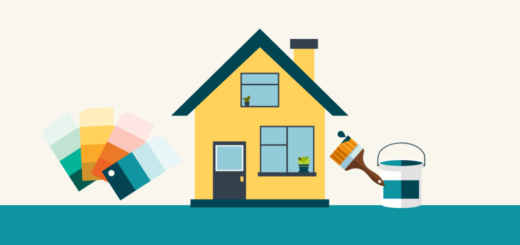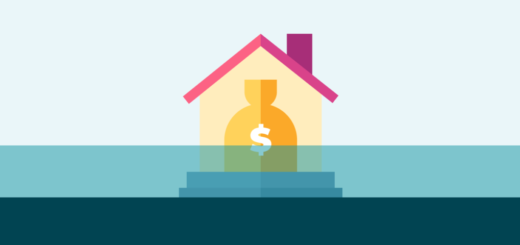How Does the Federal Reserve Affect Mortgage Rates?
Our goal is to give you the tools and confidence you need to improve your finances. Although we receive compensation from our partner lenders, whom we will always identify, all opinions are our own. By refinancing your mortgage, total finance charges may be higher over the life of the loan.
Credible Operations, Inc. NMLS # 1681276, is referred to here as “Credible.”
If you’ve noticed how much interest rates have changed lately, you might be wondering how Federal Reserve interest rates affect mortgage rates. In the summer of 2021, you could get a 30-year fixed-rate mortgage for less than 3%. Since then, average rates have nearly doubled, climbing as high as 5.81% in late June 2022, according to Freddie Mac’s Primary Mortgage Market Survey.
Knowing what the Federal Reserve does and why can help you understand what’s been happening in the mortgage market and avoid being caught off guard by changing rates.
Here’s what you need to know about the Federal Reserve and how it affects mortgage rates:
How does the Federal Reserve affect mortgage rates?
It’s a common misconception that the Federal Reserve — the central bank of the United States — sets the interest rates mortgage lenders use. That’s not true. The Fed can’t set interest rates — it can only influence them.
The Federal Reserve’s mandate
The Fed’s main job is to make monetary policy decisions designed to keep inflation low (around 2%), prices stable, and employment high. It tries to accomplish these goals using three monetary policy tools.
One is open market operations. These activities include buying and selling two types of bonds: U.S. Treasury securities and mortgage-backed securities (MBS). The Fed’s buying and selling activities influence the availability and cost of credit — in other words, how easily households and businesses can borrow money.
Buying and selling bonds affects the federal funds rate. Selling bonds helps the rate go up, and buying them helps the rate go down. This influencing of the federal funds rate indirectly affects mortgage rates.
Find Out: How to Get the Best Mortgage Rates
The federal funds rate
The federal funds rate is the interest rate banks pay to borrow money from one another overnight. Banks with more reserves than they need can lend money to banks with less reserves than they need. This liquidity helps consumers and businesses borrow money when they need it.
The Fed’s current target for the federal funds rate is 1.5% to 1.75%. This rate is much higher than the 0% to 0.25% target it was aiming for in July 2021. The Fed is trying to decrease inflation to get it closer to 2% instead of the 9% the United States experienced in June 2022. By comparison, in June 2021, inflation was 5.4% — already well above the Fed’s target.
Why do mortgage rates fluctuate?
The economy is complex, with many interrelated factors. Here’s how some of those factors affect mortgage rates.
Federal Reserve System
As noted above, the Fed indirectly influences mortgage rates by changing its target for the federal funds rate. The Fed targets a higher rate when inflation is high. Making it more expensive to borrow money can help to curb inflation, and one of the Fed’s main goals is to keep inflation low.
Global economy
Political and economic events in one country can affect prices in every other country, whether it’s the price to buy a good or service or the price to borrow money.
Think about how the pandemic-related lockdowns in China reduced Chinese manufacturing, leading to product shortages of goods in the United States (and other countries) and increasing prices. Or how Russia’s invasion of Ukraine pushed up gas prices overseas as countries pulled back on purchasing Russian oil, effectively limiting the supply.
You’ve seen how higher inflation leads to higher interest rates. Political instability can also cause investors to sell investments tied to riskier countries and purchase investments tied to more stable countries.
The bond market
Global investors consider U.S. Treasury securities to be an extremely safe investment. They trust the U.S. government to make good on its promise to repay bond principal and make scheduled interest payments. In fact, 10-year treasuries are considered a risk-free investment.
Lower-risk investments like Treasury securities tend to offer a lower rate of return relative to higher-risk investments like stocks — and mortgage-backed securities. Investors need to earn a higher return on MBS than they can earn on 10-year treasuries; otherwise, there’s no reason to take on the added risk of purchasing MBS.
So, what does this mean for mortgage rates? MBS provide liquidity for the mortgage market — in other words, they make it far easier for you to borrow money to buy or refinance your home. When 10-year treasury rates increase, MBS rates increase, and you’ll pay a higher interest rate for your mortgage.
Employment patterns
When unemployment goes down, mortgage rates tend to go up. When unemployment goes up, mortgage rates tend to go down.
The official unemployment rate comes from the Employment Situation Summary, which the U.S. Bureau of Labor Statistics releases on the first Friday of each month. In June 2022, the unemployment rate was 3.6%. In June 2021, by contrast, when mortgage rates were hovering around all-time lows, the unemployment rate was 5.9%.
Average fixed mortgage rate over the years
Freddie Mac has been tracking average mortgage rates since April 1971. Back then, rates were 7.3%. Rates gradually climbed throughout the 1980s, then spiked as high as 18.5% in October 1981 before dipping back down to 9% early in 1987.
Since then, mortgage rates have been on a long-term downward trend, reaching their lowest rate ever — just 2.77% — in August 2021. Rates have mostly increased throughout 2022, however, as inflation has gone up and unemployment has been low.
Why it makes sense to lock in a mortgage rate
A mortgage rate lock is a guarantee from your lender that your mortgage rate won’t change for a certain amount of time. How long you can lock your rate varies by lender, but you may be able to lock your rate for up to 90 days.
Locking your rate allows you to calculate exactly how much your principal and interest payment will be on a given loan amount. It allows you to shop with confidence, knowing how much home you can afford.
If you’re approved for a monthly principal and interest payment of $2,576 and you’ve locked your rate at 5%, for example, then you know you can offer up to $600,000 to buy a home with a 20% down payment. If rates increase, you can rest easy knowing your rate will stay the same.
Rate locks apply to refinancing, too. Whether you’re refinancing the amount you currently owe (a rate-and-term refinance) or more than you currently owe (a cash-out refinance), an increase in interest rates won’t cause your approval to fall through or reduce how much cash you can borrow if you lock your mortgage rate in beforehand.




